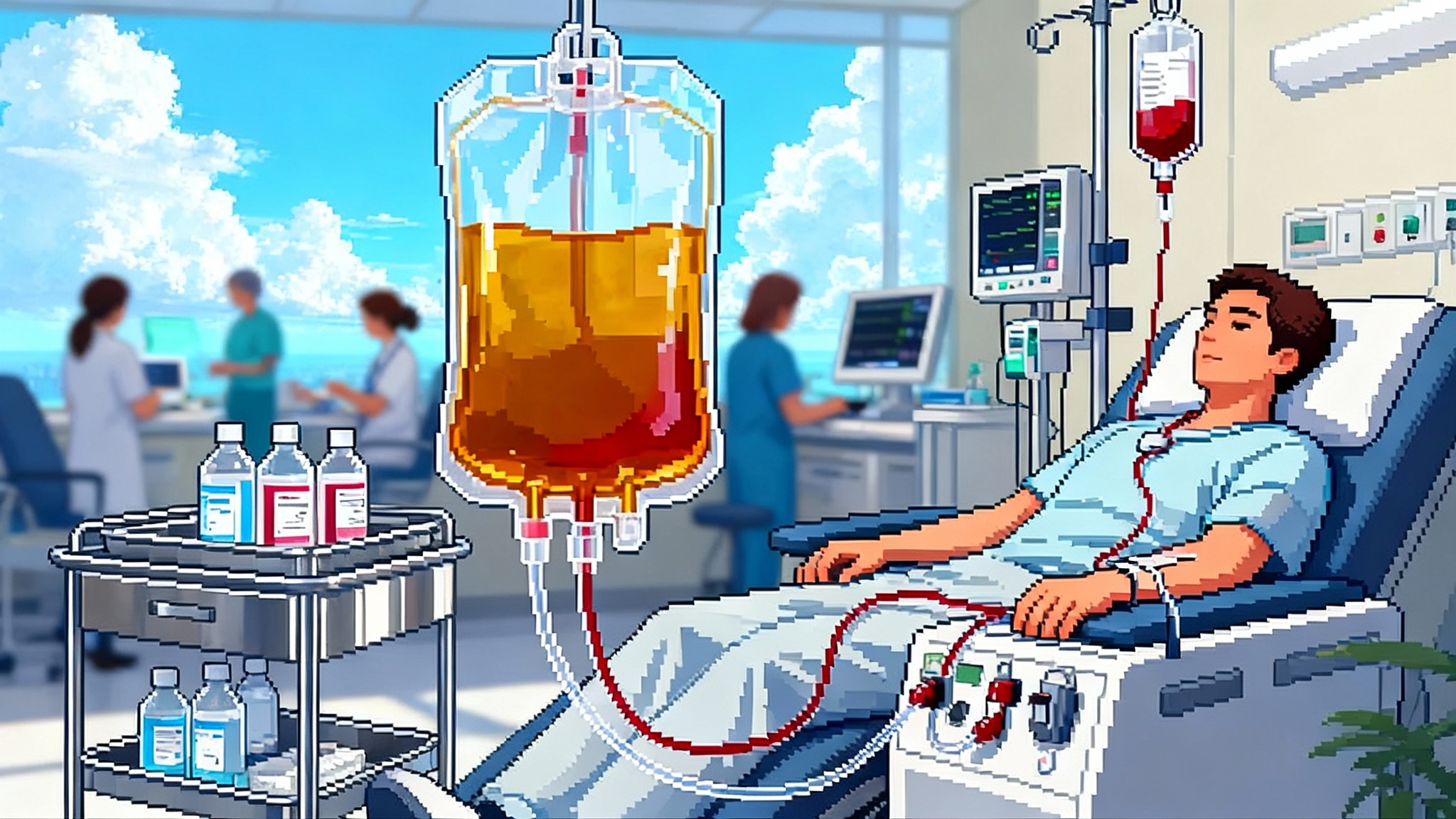GLP-1s After Weight Loss: The New Longevity Infrastructure
In 2025, GLP-1 drugs move beyond weight loss into validated risk reduction. Regulators, outcomes trials, and insurers now point to survival and organ protection as the main story.

The moment GLP-1s grew up
There is a before and after for GLP-1 receptor agonists. Before, they were the blockbuster weight-loss drugs that turned pharmacy counters and dinner parties into the same conversation. After, they became something more basic and more durable: a layer of population health infrastructure that reduces cardiovascular events and protects organs. The year 2025 is the hinge. Several new outcome readouts and pooled analyses have converged with insurer mortality modeling to reframe this entire class as a de facto longevity intervention.
The pivot did not come from clever branding. It came from hard clinical endpoints and regulatory action. The most visible signal was the FDA expanded Wegovy label confirming reduction in major cardiovascular events for adults with overweight or obesity and established cardiovascular disease. That decision moved GLP-1s beyond body mass index and into the same risk-reduction conversation as statins. In parallel, kidney outcomes matured and strengthened the organ protection case, with the FLOW kidney outcomes in NEJM building confidence that these drugs help preserve renal function in high-risk patients.
The language changed accordingly. Employers, life insurers, and reinsurers no longer ask only, How much weight will members lose? They ask, How many heart attacks, strokes, and dialysis starts can we avoid over the next decade, and at what cost per event averted? Once policymakers and actuaries start to speak that way, you are no longer selling a diet. You are laying pipe.
Why this is new in 2025
Three shifts crystallized this year:
-
Stronger endpoints moved the goalposts. Weight and glycated hemoglobin remain important, but risk reductions in cardiovascular and renal events speak directly to survival. That evidence base now has regulator validation, a higher bar than observational weight loss or short-term biomarkers.
-
Meta-analyses and pooled looks matured. With more large trials completed, analysts can combine data across studies and hazard strata. The signal is consistent: GLP-1s reduce major adverse cardiovascular events, slow the progression of chronic kidney disease in at-risk patients, and likely reduce hospitalizations for heart failure.
-
Insurer models followed the data. Health plans and life insurers have begun to adjust long-run assumptions as coverage expands. Their spreadsheets translate clinical endpoints into survival curves and expected claims. Those curves, not before-and-after photos, decide budgets.
None of this denies the obvious: weight loss itself matters. Lower adiposity improves insulin sensitivity, blood pressure, and lipids, which all flow into lower cardiovascular risk. The point is different. Even if a patient’s weight plateaued, GLP-1s carry direct cardiometabolic effects that extend beyond a lower number on a scale.
What makes a drug a longevity intervention
Longevity is often treated as a fuzzy aspiration. The practical test is more sober. A therapy qualifies as a longevity intervention when three conditions are met:
- It lowers hard clinical endpoints that correlate with survival, such as cardiovascular events, kidney failure, and hospitalizations for heart failure.
- Regulators recognize those endpoints in labeling or guidance.
- Payers and risk managers embed those effects in their long-term models and pay for use in populations that extend beyond acute and late-stage disease.
GLP-1s now meet that test. This is not the same as claiming they lengthen life for everyone in any circumstance. It means that, at scale, they shift the distribution of outcomes in the direction that matters most: fewer events that kill or disable people early. This sits alongside adjacent prevention work such as CHIP moves from marker to target.
Mechanisms, in plain language
Think of cardiometabolic risk as a network of levers. Weight loss pulls on many of them at once. But GLP-1s also act directly.
- Glucose and insulin: GLP-1s help the pancreas release insulin when glucose is high and suppress glucagon when it should be low. That smooths spikes and reduces the toxic glucose oscillations that harm vessels and kidneys.
- Vascular inflammation and endothelial function: Lower inflammation and improved endothelial signaling reduce the chance that plaques grow unstable. That translates to fewer heart attacks and strokes over time.
- Blood pressure and lipids: Modest reductions in blood pressure and triglycerides add incremental benefit. Each small nudge compounds when applied to millions of people.
- Satiety and eating behavior: By reducing hunger and slowing gastric emptying, GLP-1s help people sustain nutritional patterns that maintain metabolic improvements. The body’s set point moves gradually. The metabolic math gets easier.
Put those levers together and you get multi-organ protection. The kidney sees fewer years of hyperfiltration. The heart sees less strain and more stable fuel supply. The liver stores less fat. Sleep apnea improves as airway tissue pressure changes. No single lever produces a miracle. The bundle changes the arc of disease.
From body mass index to risk-targeted deployment
Body mass index is a poor compass for life and death. It is easy to measure, but it mixes muscle, fat distribution, and age into a single number that hides risk. The 2025 playbook shifts to risk-targeted deployment.
- Prioritize patients with documented cardiovascular disease or multiple risk factors. This is where absolute event reduction is largest. The benefit is not just weight loss. It is a direct reduction in heart attacks and strokes.
- Add patients with stage 2 or 3 chronic kidney disease or early albuminuria. Protecting kidney function prevents a cascade of hospitalizations, procedures, and productivity loss.
- Consider patients with heart failure with preserved ejection fraction who carry obesity or diabetes. They see improved capacity and fewer exacerbations.
This risk-first framing makes coverage debates more tractable. Instead of arguing over vanity and willpower, payers weigh event rates, price per quality-adjusted life year, and the avoided costs of dialysis and intensive care.
How primary prevention could bend mortality curves
Picture a city of one million adults. Each year, 5,000 people in this city suffer a major cardiovascular event. If a risk-targeted GLP-1 program reaches 10 percent of adults who are at high risk, and the treated group experiences a relative reduction in major events consistent with the top-line cardiovascular data, then several hundred events per year could be avoided in that city alone. Over a decade, that equates to thousands of families without a funeral that would have happened early.
The math scales. Nationally, primary prevention would not replace statins, blood pressure medicines, or smoking cessation. It complements them. Statins stabilize plaques and improve lipids. The frontier in LDL lowering includes PCSK9 base editing for LDL. Angiotensin converting enzyme inhibitors and angiotensin receptor blockers control blood pressure and protect kidneys. Sodium glucose cotransporter 2 inhibitors, often called SGLT2 inhibitors, create glucose and sodium loss in urine, unloading the heart and protecting kidneys. GLP-1s add a distinct axis of risk reduction. The combination shifts the expected number of first events further down.
At a population level, small percentage changes in common outcomes matter more than large percentage changes in rare conditions. A three to five percent reduction in cardiovascular mortality across tens of millions of adults prevents more deaths than a dramatic improvement in a rare cancer. That is the difference between breakthrough medicine and infrastructure.
Stacking: GLP-1s with SGLT2 inhibitors
Combination therapy is the next logical step. GLP-1s and SGLT2 inhibitors work through different pathways. GLP-1s modulate insulin and satiety and reduce inflammation. SGLT2 inhibitors block glucose and sodium reabsorption in the kidney, leading to lower intraglomerular pressure and reduced preload and afterload on the heart.
In patients with type 2 diabetes or documented kidney disease, the combination can be synergistic. Expect larger reductions in hospitalization for heart failure, slower decline in estimated glomerular filtration rate, and additive effects on weight and blood pressure. Safety monitoring must be tighter. People on both classes need guidance on hydration, sick-day management, and recognition of rare complications like euglycemic ketoacidosis with SGLT2 inhibitors.
For health systems, the practical action is to build co-initiation pathways for patients who meet clear criteria. Keep the initial doses conservative, titrate slowly, and embed nurse-led check-ins during the first three months to support adherence and catch issues early.
The coming wave of oral formulations
Needles are friction. Oral options can turn a hesitant yes into a committed regimen. There are two routes to oral therapy.
- Peptide tablets with absorption enhancers. These deliver versions of existing molecules at higher oral doses. They require attention to timing relative to meals and other medications.
- Non-peptide small molecules that activate the GLP-1 receptor. These promise once-daily dosing without injections. They also raise new questions about off-target effects and long-term safety profiles.
For primary care, the arrival of credible oral choices will simplify initiation and titration. For payers, oral alternatives could pressure prices and expand access to patients who will not inject. For manufacturers, oral scale will shift supply chain constraints from pen assembly to active pharmaceutical ingredient capacity and tableting lines.
Adherence, access, and the human factors that decide outcomes
The best trial is irrelevant if patients stop taking the drug. Adherence is the hinge between biology and population health. Three simple practices make a large difference.
- Titrate slowly and personalize the dose. Many patients never need the maximal dose to see clinical benefit. Aggressive titration creates avoidable nausea, vomiting, and discontinuation. A lower steady dose that patients tolerate can deliver most of the risk reduction at a fraction of the side effects.
- Coach for side effect management. Simple scripts work. Eat smaller meals, limit high-fat foods early in therapy, pause dose escalation after a bad week, and keep antiemetics available. A ten-minute nurse check-in during the first month prevents many drop-offs.
- Remove refill friction. Ninety-day fills, synchronized refills with other chronic medicines, and digital reminders increase persistence.
Access remains the stubborn barrier. Prices, prior authorizations, and supply constraints still shape who receives therapy. The path forward is not a slogan. It is a coverage design.
- Start with high-risk cohorts where event reduction is largest and easiest to measure. Patients with established cardiovascular disease, chronic kidney disease, or both should be prioritized for both clinical and budget reasons.
- Pre-approve co-initiation with SGLT2 inhibitors in patients who meet clear criteria. Build bundled prior authorization that covers both classes when appropriate.
- Tie coverage expansion to adherence support. Plan designs that invest a small amount in coaching will save money downstream.
Safety trade-offs, stated plainly
No drug is a free lunch. Patients and clinicians should know the risks and how to mitigate them.
- Gastrointestinal side effects are common early. Slow titration and meal adjustments reduce the burden. Most symptoms improve over weeks.
- Gallbladder disease risk rises modestly with rapid weight loss. Watch for right upper quadrant pain and consider ultrasound if symptoms emerge.
- Pancreatitis is rare but serious. Patients with a history of pancreatitis need a careful discussion of risks and alternatives.
- Diabetic retinopathy can worsen temporarily with rapid glycemic improvement. Diabetic patients should receive baseline and follow-up eye exams during the first year of therapy.
- Lean mass loss accompanies fat loss. Encourage resistance training and adequate protein intake. This is a longevity drug class, not a crash diet.
- Black box family history warnings remain. Patients with a personal or family history of medullary thyroid carcinoma or multiple endocrine neoplasia type 2 should avoid this class.
The trade-offs are manageable. They require attention and follow-up, not heroics.
What payers, employers, and health systems can do now
- Build risk-first eligibility. Use cardiovascular disease, kidney disease, and composite risk scores to prioritize who starts therapy. This aligns clinical benefit with budget impact.
- Stand up a three-month onboarding service. Pharmacists or nurses can run titration calendars, side effect playbooks, and refill checks. Treat it like cardiac rehab for medication adherence.
- Design coverage that rewards persistence. Reduce copays after the first three months for patients who engage in coaching and demonstrate adherence.
- Measure outcomes that matter. Track hospitalizations for heart failure, declines in estimated glomerular filtration rate, and major cardiovascular events. Share the data with clinicians and members.
- Plan combination therapy pathways. For the appropriate patients, co-initiate GLP-1s and SGLT2 inhibitors. For others, plan for stepwise addition based on response.
A note on equity
Longevity infrastructure must reach the people who suffer the most from cardiometabolic disease. That means community clinics, Medicaid plans, and employers with large hourly workforces. The clinical effect is the same molecule by molecule. The implementation model must change to meet people where they are. Transportation vouchers to clinic visits, workplace education sessions, and coverage that minimizes up-front costs will matter more than any press release. Pressure on transplant waiting lists will persist; watch adjacent innovations like gene-edited pig kidneys in 2025 as the ecosystem evolves.
The big picture
The idea of longevity often drifts into supplements and hopeful biomarkers. GLP-1s bring it back to earth. Cardiovascular disease and chronic kidney disease are the workhorses of early mortality in rich and poor countries alike. A therapy class that lowers events in both, validated by regulators and funded by payers, is not a fad. It is an asset that compounds.
In 2025 the story is no longer that GLP-1s make people look different. It is that they help people live longer and avoid organ failure. The weight-loss narrative still matters, but it sits inside a larger frame: protect the heart, protect the kidney, protect the worker, protect the household. That is what infrastructure does.
Closing thought
Infrastructure is boring until it fails. Longevity infrastructure is invisible until the years you do not lose show up on a family calendar. GLP-1s are now part of that substrate. Treat them with the seriousness we reserve for bridges and grids. Build the coverage, coaching, and combinations that turn one patient’s good week into a population’s better decade. Then hold the system to account for results you can count, not just stories you can tell.








